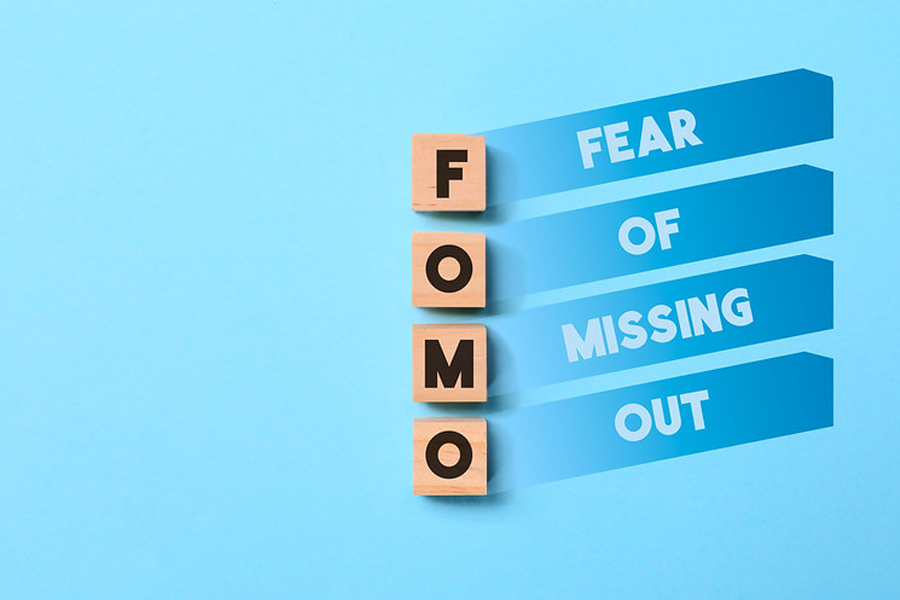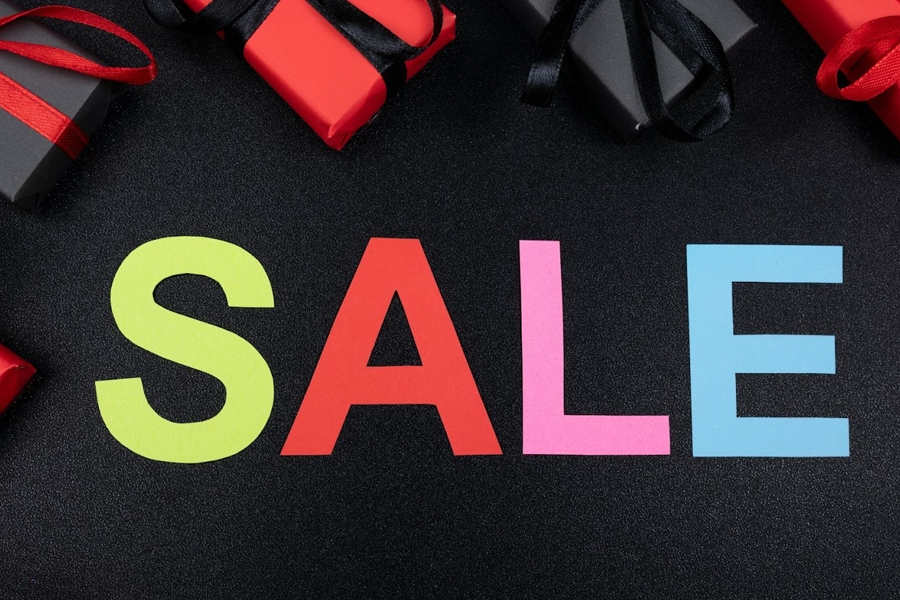Have you ever been in a situation where you feel like you can’t miss something? This could be a birthday party, a concert, or a product that is on sale for a short period. Almost all people experience this feeling called fear of missing out (FOMO).
However, many businesses don’t know how to use consumers’ fear of missing out to trigger their desire to make purchases. In this article, we will be teaching you all there is to know about FOMO. Ready?

What Is Fear of Missing Out (FOMO)
What is fear of missing out or FOMO? NIH’s international journal PubMed Central explained that FOMO is a phenomenon observed on social networking sites. The fear of missing out refers to the human behavior of being anxious or nervous when they are about to miss something.
Marketing Strategist Dr. Dan Herman first identified the fear of missing out phenomenon in 1996. He said that FOMO would become more widespread through social media apps, phone usage, and texting; it would be common among the masses.
Since the fear of missing out triggers insecurities, it has been linked to negative emotions, such as anxiety and depression. Although FOMO isn’t considered a psychological condition, it can impact both the mental and physical well-being of people.
The Psychological Impact of FOMO on Consumer Behavior
Since young adults are more exposed to social media’s pervasive influence, they are more likely to have the sense of experiencing negative emotions or “negative affect.” This makes them more vulnerable to the fear of missing out.
Psychological experts said that FOMO greatly affects public health since it is considered a constant companion of many individuals. This feeling phenomenon is further triggered by problematic social media use as people prefer sharing only positive aspects of their lives online.
Seeing the achievements of others can trigger people’s social anxiety and other negative emotions, which contribute to mental health issues. The vicious cycle of wanting to acquire what others have just to achieve life satisfaction can impact people’s behaviors, such as their spending habits.
FOMO drastically affects consumer behavior since this feeling can trigger the perception of missing out and customers’ compulsive behaviors.
For example, college students could experience FOMO during concerts since they might think their college life will be incomplete without attending them. Once they purchase the concert tickets, giving a temporary boost to their psychological well being.
Using FOMO in Marketing Campaigns and Strategies
You already know that the fear of missing out can greatly impact consumers’ behavior. This means that FOMO is great for marketing and advertising campaigns since it can easily trigger urgency among customers.
In the paragraphs below you will find some reasons why you should start using FOMO in your marketing tactics.
Social Networking Exposure
Almost all people are now exposed to social networking because of Facebook, Instagram, and other online platforms. These give marketers great opportunities to take advantage of people who experience FOMO.
Not only can you trigger customers’ fear of missing out by unveiling exclusive and time-limited deals, but you can also start trends. This could foster better engagement since many of them wouldn’t want to miss online social events, helping your business create deeper connections with consumers.
Boosting Self-Esteem
Consumers’ desire to boost their self esteem is also another reason why FOMO-focused marketing campaigns are effective. You can make them feel confident about themselves by making your products and services as gateways to new and unique experiences.
If customers are able to feel that they are having unique experiences that other people can’t have, then they’ll have more confidence.
Morality
In some scenarios, the fear of missing out can be linked to people’s morality. These include helping in the worsening global warming and climate change crisis. Numerous environmental research stated that consumers who are eco-friendly respond positively to FOMO-focused marketing campaigns.
You can utilize FOMO to encourage consumers to buy products by launching eco-friendly campaigns, which they wouldn’t want to miss because of their sense of environmental responsibility.
Incorporating FOMO Triggers in Product Launches and Pre-orders
Aside from marketing campaigns, you can also utilize FOMO in product launches and pre-orders. All you have to do is know what triggers people’s fear of missing out.
Screen Time
Many consumers suffer from internet addiction because of problematic internet use. Those who have higher screen time are the ones usually seeing trends, events, and activities online.
These can make them feel the fear of missing out as they might believe they’re not keeping up with the latest developments.
Social Media
Seeing other social media users’ posts about their hobbies, achievements — like academic performance — and other exciting experiences could trigger FOMO.
This is because social media platforms tend to create a social comparison, which pressures people to keep up with others’ lifestyles.
Reference Anxiety
Consumers can experience reference anxiety whenever they compare themselves with other people in terms of accomplishments and lifestyle. This can lead to FOMO since people would feel the need to get rid of their inferiority.
Work Environment Changes
Another common FOMO trigger is work environment changes. When employees receive promotions or get invited to exclusive events, others will feel like they are being left behind.
Incorporating all these FOMO triggers in product launches and pre-orders can lead to a distorted sense of being left behind. This could happen through social comparisons, online, self-evaluation, and professional work settings. Leveraging them in strategic product pre-orders and launches can definitely trigger consumers’ compulsive behavior.

FOMO in Social Media Marketing: Live Events, Flash Sales, and Contests
Social media marketers use FOMO triggers in their live events, flash sales, and contests. By using the fear of missing out, these social media marketing strategies can trigger a sense of urgency among customers.
Live Events
Using live events to launch new products can provide a real-time experience that customers wouldn’t want to miss. Because they want to avoid social exclusion, they would likely attend your live events, which can increase social media engagement.
Flash Sales
Flash sales on social media platforms also create urgency among customers. Businesses can post time-sensitive discounts and offer exclusive order access to limited products.
By boosting social media usage, flash sales can trigger FOMO as consumers will strive to avoid missing out on exclusive deals.
Contests
Another FOMO-inducing marketing strategy on social media sites is contests.
By offering exclusive prizes within a specific timeframe, you can make consumers more engaging. Since they fear social exclusion, they’ll most likely participate in your online contests.

Crafting Compelling FOMO-driven Content and Copywriting
Crafting compelling FOMO-driven content focuses on the desire of consumers not to miss exciting experiences. As a business owner, you must stay continually connected with them through various social media sites. This will ensure that your content fills their need for social relationships and social connections.
Here are the steps on how to use your copywriting skills to create compelling FOMO-focused content.
Value Proposition of Product or Service
Before you can trigger consumers’ fear of missing out, you must provide your product’s value proposition. This will let them know what makes your services and products unique from what competitors offer.
Create Urgency
To induce FOMO among consumers, your content needs to create a sense of scarcity or exclusivity. By limiting the availability/access and providing offers for a short period, you trigger their sense of urgency.
Social Proof or Testimonials
Once you activate their sense of urgency, you must trigger their FOMO when it comes to social comparisons. Sharing social proof and testimonials on a social network site will make them feel like they are being left behind by other consumers who already tried your products.
Compelling CATs
In the last part of your content, you can also create urgency by including clear and compelling CATs (call to action).
To create a sense of urgency and FOMO, you can use words such as “today,” “now,” and “don’t miss out.” Make sure to include incentives and other bonuses that customers wouldn’t want to miss.
Addressing FOMO Ethically and Responsibly in Marketing
In today’s problematic internet realm, you must address FOMO ethically and responsibly to maintain your consumers’ well-being. Before you launch FOMO-driven marketing campaigns, further research must be conducted to understand its impact on psychological health.
Instead of emphasizing scarcity excessively, you can create marketing campaigns that genuinely excite customers. You can also focus on inclusivity instead of exaggerating exclusivity.
By using positive FOMO-driven marketing campaigns, your business will not contribute to customers’ worsening social networking addiction. You can even help them improve their well being, making your business an ethical and responsible one.
Case Studies and Examples of Successful FOMO Marketing Campaigns
According to Eventbrite‘s research, almost 70% of millennials — 7 out of 10 — experience FOMO. Because of their fear of missing out, around 60% of these young consumers make impulsive purchases. This means that they’ll buy anything just because they feel like being left behind.
This is why many businesses use FOMO-driven marketing campaigns. Here’s a brief overview of some of the successful FOMO-inducing marketing programs of big companies.

Supreme (Collaborations)
Streetwear brand Supreme is very popular for its limited-edition and exclusive collaborations. Its marketing strategy triggers FOMO by creating a cult-like following that many consumers want to be included in.
Macy’s (Black Friday sales)
Black Friday sales are one of the best examples of FOMO-focused marketing campaigns. Macy’s is one of the brands that uses it. By offering limited-time promotions and deals, Macy’s creates a sense of urgency among its clients.
H&M (Limited-Edition Collections)
Just like Supreme, H&M is another clothing brand that creates a sense of scarcity and demand. It triggers consumers’ fear of missing out by offering limited-edition collections that are usually offered for a short period.
Starbucks (Frappuccino Happy Hour)
Starbucks also triggers the fear of missing out by launching its Frappuccino Happy Hour. This promotion usually lasts for a few days and is offered typically during afternoons. Frappuccino Happy Hour’s discounts and seasonal drinks create a sense of urgency among consumers.
Nike (Nike’s Membership)
Nike’s Membership is another great FOMO-inducing marketing tactic that creates social comparison. This subscription service gives members early access to new product releases and exclusive discounts. Members feel like they are experiencing something unique, while non-members would feel like being left behind in the latest trend.
Frequently Asked Questions
What is the fear of missing out?
Fear of missing out or FOMO is a phenomenon that is usually observed on social media platforms. It involves two processes: first is having the perception of missing out and the second is making a compulsive behavior to get rid of FOMO.
Is FOMO a mental disorder?
As of the moment, FOMO isn’t a diagnosable psychological condition. However, it can still greatly impact your physical and mental health.
Is FOMO just jealousy?
FOMO is more complicated than jealousy. Unlike jealousy, FOMO is likely to trigger compulsive behaviors among people. But, the fear of missing out still involves a deep sense of jealousy and affects self-esteem.